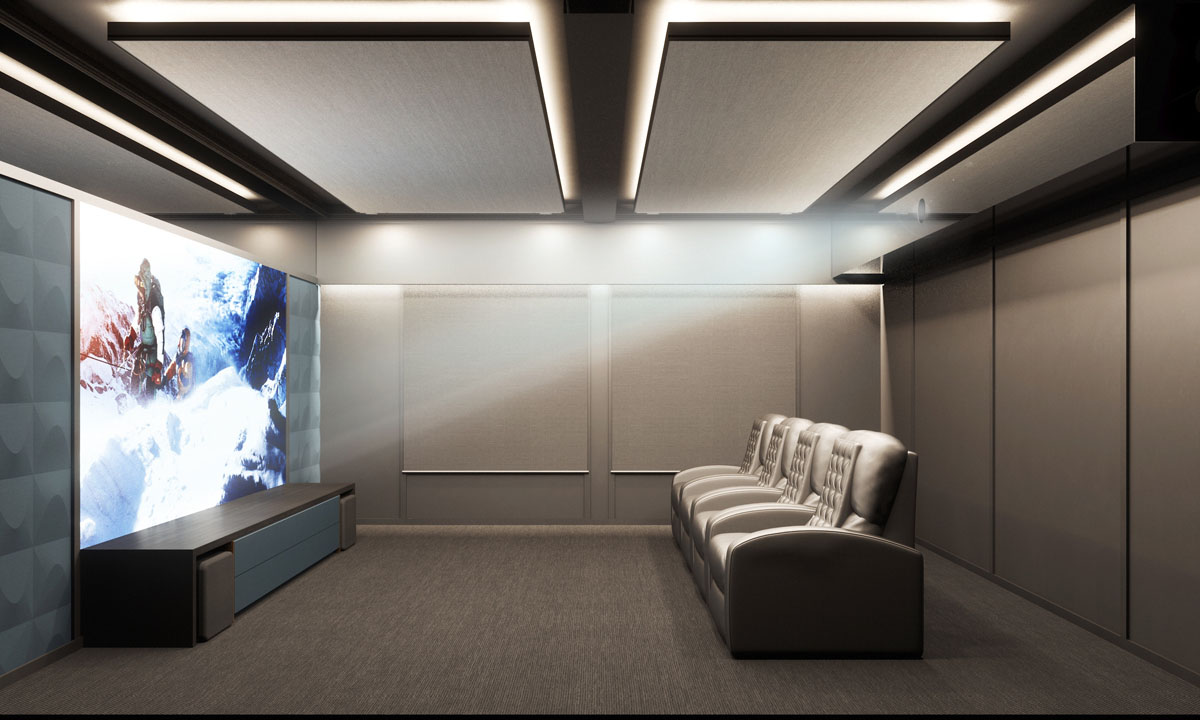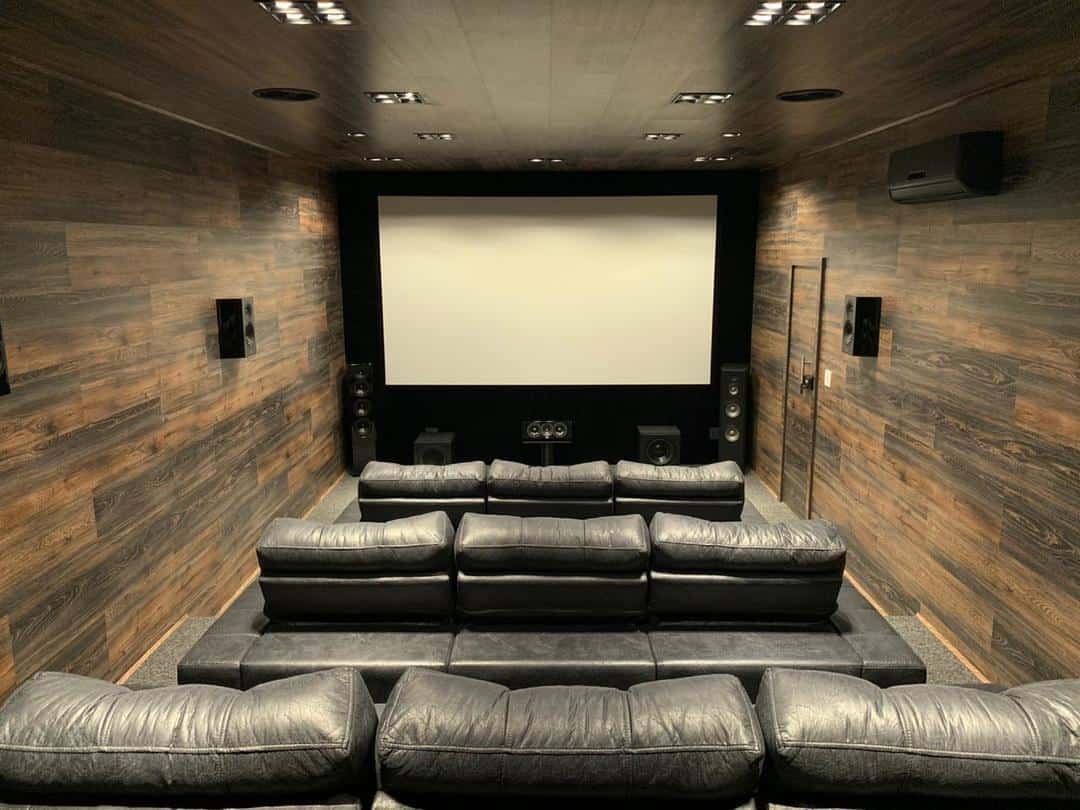Transform Your Living Space with Tampa Home Theater Installation
Transform Your Living Space with Tampa Home Theater Installation
Blog Article
Home Theater 101: Whatever You Required to Know for a Motion Picture Experience in the house
Developing a home cinema that equals the cinematic experience of a business theatre involves mindful factor to consider of multiple components, including screen selection, sound systems, and space layout. Each element plays an essential duty in attaining the wanted atmosphere and capability. Whether you are contemplating the perfect display size or the complexities of border noise, recognizing these principles is vital. As we check out these critical parts, it comes to be evident that the options made can considerably affect your overall viewing experience, leaving one to ponder exactly how these decisions will certainly shape your individual movie theater.
Choosing the Right Screen
When establishing up a home movie theater, choosing the best display can make or break the watching experience - tampa home theater installation. The screen serves as the focal point of your configuration, affecting picture quality, watching angles, and overall visual. Secret variables to take into consideration consist of screen resolution, size, and kind
Initially, figure out the ideal screen size based on your room dimensions and seating distance. Next off, choose between different display kinds, such as fixed-frame, mechanized, or retractable screens, each offering distinctive advantages.
Resolution is another important aspect. For an absolutely immersive experience, think about a screen developed for 4K or perhaps 8K material, making sure sharpness and clarity. Furthermore, think about the display's gain, which impacts illumination and contrast; a higher gain can boost brightness in well-lit spaces, while a lower gain might be better for darker settings.
Picking Sound Equipment
Audio equipment is an essential component of any home movie theater system, dramatically improving the total watching experience. The choice of audio equipment can determine the depth, quality, and immersion of sound, essential for developing a cinematic atmosphere.
When picking audio equipment, consider a surround sound system, which usually consists of a receiver, several speakers, and a speaker. A 5.1 or 7.1 channel system is recommended, where the first number stands for the speakers and the second the subwoofer, supplying an immersive soundscape. The receiver is the heart of the system, handling sound and video signals, and must support modern styles like Dolby Atmos for an enhanced spatial experience.
Quality audio speakers are crucial; seek models that use a well balanced noise profile with good bass reaction. Floor-standing speakers can produce richer sound, while shelf alternatives conserve room. Furthermore, consider wireless alternatives for simplicity of setup, although wired systems usually provide premium performance.

Ideal Seating Plans
Producing an optimal home cinema experience hinges significantly on optimum seating plans. The arrangement of seats plays a critical function in both convenience and watching high quality, straight affecting the overall cinematic experience.
First, take into consideration the screen size and checking out range. A common guideline is to place seats at a range approximately 1.5 to 2.5 times the diagonal size of the display. This ensures an immersive experience without straining the eyes.
Following, elevation is essential. The back rows need to be greater than the front to avoid obstructions if your seats is in a tiered layout. For flat seating, make certain that the front row is not too near the screen, which everyone has a clear view.
In addition, consider the setup in terms of social dynamics. Group seating can improve the common experience, while individual seats might be preferred for personal viewing.

Lastly, prioritize convenience with ergonomic seating that sustains prolonged watching durations. Integrating reclining chairs or supported seats can dramatically enhance the experience, making the home cinema a preferred location for both entertainment and leisure.
Lighting and Ambiance
Reliable lighting and setting are vital parts of a properly designed home theater, as they significantly influence the viewing experience. The best lighting can improve the cinematic feeling, while bad selections can interfere with it. For optimum outcomes, consider a split illumination strategy that consists of ambient, task, and accent lighting.
Ambient lights provides general illumination, guaranteeing that the room is not entirely dark, which can stress the eyes. Resources Dimmer buttons are very recommended, permitting modifications based on the material being checked out. Task lights, such as wall surface sconces or floor lamps, uses practical lighting for activities like analysis or browsing the space without disrupting the overall environment.
Accent illumination can be used to highlight architectural attributes or produce centerpieces, adding depth and interest to the click area. LED strip lights behind displays or along shelves can provide a refined glow that enhances the aesthetic experience without frustrating the audience.
Wiring and Installation Tips
A well-planned wiring setup is crucial for achieving optimum efficiency in your house movie theater system. Proper circuitry not just makes sure top notch audio and video signals yet likewise improves the overall visual of your space. Begin by drawing up your design, determining where each component will certainly be placed, including your display, audio speakers, and receiver.
When selecting wires, focus on top quality, appropriately determined circuitry to minimize signal loss. HDMI cables need to be utilized for video clip connections, while speaker cord must match the specifications of your audio speakers and amplifier. Choose in-wall ranked cords to abide by safety and security requirements and maintain a tidy look.

Final Thought
In summary, developing a remarkable home movie theater experience calls for careful factor to consider of numerous aspects, including screen selection, audio tools, seating plans, lights, and electrical wiring. By prioritizing look here these elements, a cinematic ambience can be efficiently replicated, allowing for immersive viewing experiences that match standard theater settings.
Developing a home cinema that equals the motion picture experience of a commercial theatre includes cautious consideration of several components, consisting of screen choice, audio systems, and room design.When establishing up a home movie theater, picking the right display can make or damage the checking out experience. Next off, select in between various screen types, such as fixed-frame, motorized, or retracting screens, each offering distinctive advantages. For a genuinely immersive experience, think about a display designed for 4K or also 8K material, guaranteeing sharpness and quality.In summary, developing an extraordinary home movie theater experience requires mindful consideration of different elements, consisting of screen selection, audio devices, seating plans, lights, and circuitry.
Report this page